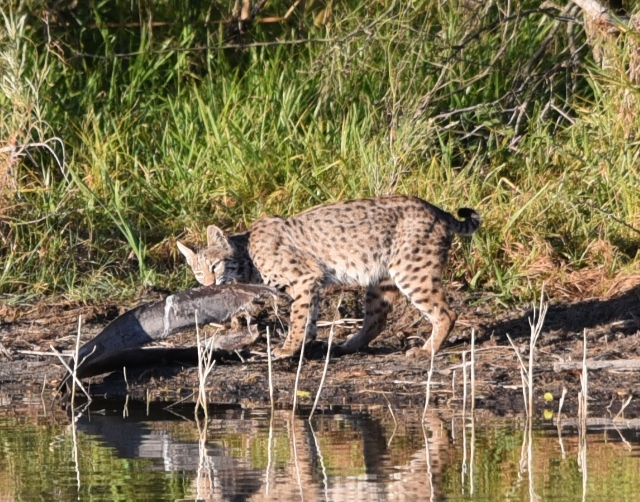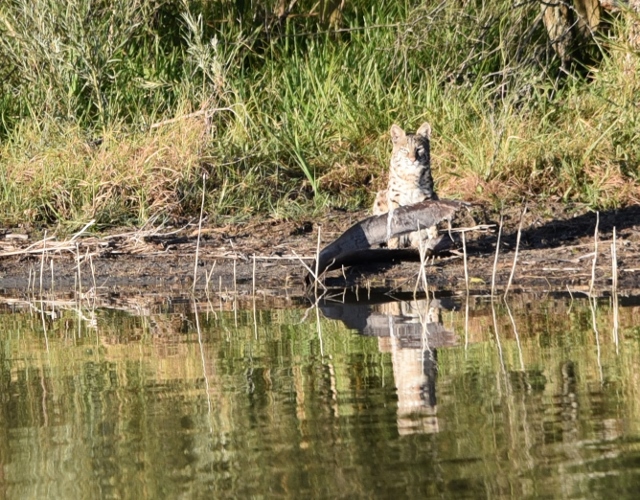
Story and photos by Anita Westervelt, Texas Master Naturalist
A bobcat will stalk, hide behind a structure, crouch, wiggle its hindquarters, pounce, leap and purr just like the family domestic cat — but beware — no matter how cute, bobcats are wild animals!
Bobcats vary in color but are generally tan, brown or gray with black spots all over and white belly fur. They are two to three times larger than a domestic cat and have a fuller, more muscular body. Their unique features include a short, black-tipped, bobbed tail; a tuft of black fur at the top of their pointed ears; long jowl fur; and distinctive black bars on the forelegs. The black ear tufts are important to their ability to collect sound to improve their hearing.
Their powerful hind legs allow bobcats to jump fences over six feet high; they can jump 12 feet and leap 10 feet to pounce on a prey; their top running speed has been clocked at 34 mph.
These medium-sized cats are found only in North America, roaming freely throughout Texas but rarely seen. They are shy, preferring to avoid humans. Bobcats are crepuscular, which means they are most active at dawn and dusk. They begin prowling about three hours before sunset until around midnight and then again about an hour before dawn to early morning.
Bobcats are solitary and territorial. They rarely cross each other’s paths except during the mating season. Their range size varies depending on availability of suitable prey, season of the year and habitat composition. They frequently hunt from roads and trails and may cover as much as fifty miles or as little as five.

Female bobcats may have a territory range of about six square miles; males as large as 30 to 60 square miles. A male’s territory can overlap several female territories. The cats do not use all of their territory but have preferred, established and circuitous travel routes. Likely they return to a particular point on their route every week to three weeks. They will walk dry creek beds and openly along banks of streams and resacas that have adjacent wilderness cover.
Their non-hunting hours are spent resting and sleeping in various dens in their territory which might be a hollowed-out or fallen tree or brush pile. They especially like abandoned buildings in scrub brush forests where small rodents are likely to populate.
Rabbits are a bobcat’s preferred food, followed by squirrels, rats and mice, and larger prey, such as fawns, and adult deer, mostly as carrion, which may be consumed during winter when other food isn’t as prevalent. They also will eat chickens, wild fowl, birds, feral cats and small wild dogs.
The bobcat’s conservation status is healthy because they are very adaptable and can live in a wide variety of habitat. They have few predators in the Valley, mainly coyotes and great horned owls. When threatened, bobcats usually head for the safety of the nearest tree.
Bobcats are polygamous and typically mate during late winter with normally two bobkittens being born between April and May.
Useful Websites in writing this article: urbancarnivores.com, treehugger.com, depts.ttu.edu, national geographic.com, americanexpedition.us/bobcat, laanimalservices.com, nationaltrappers.com, grandviewoutdoors.com, texasnativecats.org, and tpwd.texas.gov.

Leave a Reply